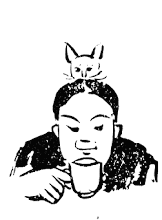Ways of Seeing
|
The Ambassadors
Hans Holbein the Younger (1497/8-1543)
1533 Oil on oak 207 × 209.5 cm National Gallery, London
|
John Berger, Ways of Seeing (London: Penguin, 1972).
...
[Page 89] Holbein’s painting of The Ambassadors (1533) stands at the beginning of the tradition and, as often happens with a work at the opening of a new period, its character is undisguised. The way it is painted shows what it is about. How is it painted?
[Page 90] It is painted with great skill to create the illusion in the spectator that he is looking at real objects and materials. We pointed out in the first essay that the sense of touch was like a restricted, static sense of sight. Every square inch of the surface of this painting, whilst remaining purely visual, appeals to, importunes, the sense of touch. The eye moves from fur to silk to metal to wood to velvet to marble to paper to felt, and each time what the eye perceives is already translated, within the painting itself, into the language of tactile sensation. The two men have a certain presence and there are many objects which symbolize ideas, but it is the materials, the stuff, by which the men are surrounded and clothed which dominate the painting.
Except for the faces and hands, there is not a surface in this picture which does not make one aware of how it has been elaborately worked over—by weavers, embroiderers, carpet-makers, goldsmiths, leather workers, mosaic-makers, furriers, tailors, jewelers—and of how this working-over and the resulting richness of each surface has been finally worker-over and reproduced by Holbein the painter.
This emphasis and the skill that lay behind it was to remain a constant of the tradition of oil painting.
Works of art in earlier traditions celebrated wealth. But wealth was then a symbol of a fixed social or divine order. Oil painting celebrated a new kind of wealth—which was dynamic and which found its only sanction in the supreme buying power of money. Thus painting itself had to be able to demonstrate the desirability of what money could buy. And the visual desirability of what can be bought lies in its tangibility, in how it will reward the touch, the hand, of the owner.
[Page 91] In the foreground of Holbein’s Ambassadors there is a mysterious, slanting, oval form. This represents a highly distorted skull: a skull as it might be seen in a distorting mirror. There are several theories about how it was painted and why the ambassadors wanted it put there. But all agree that it was a kind of memento mori: a play on the medieval idea of using a skull as a continual reminder of the presence of death. What is significant for our argument is that the skull is painted in a (literally) quite different optic from everything else in the picture. If the skull had been painted like the rest, its metaphysical implication would have disappeared; it would have become an object like everything else, a mere part of a mere skeleton of a man who happened to be dead.
…
[Page 94] Let us now return to the two ambassadors, to their presence as men. This will mean reading the painting differently: not at the level of what it shows within the frame, but at the level of what it refers to outside it.
The two men are confident and formal; as between each other they are relaxed. But how do they look at the painter—or at us? There is in their gaze and their stance a curious lack of expectation of any recognition. It is as though in principle their worth cannot be recognized by others. They look as though they are looking at something of which they are not part. At something which surrounds them but from which they wish to exclude themselves. At the best it may be a crowd honouring them; at the worst, intruders.
What were the relations of such men with the rest of the world?
The painted objects on the shelves between were intended to supply—to the few who could read the allusions—a certain amount of information about their position in the world. Four centuries later we can interpret this information according to our own perspective.
[Page 95] The scientific instruments on the top shelf were for navigation. This was the time when the ocean trade routes were being opened up for the slave trade and for the traffic which was to siphon the riches from other continents into
In 1519 Magellan had set out, with the backing of Charles V, to sail round the world. He and an astronomer friend, with whom he had planned the voyage, arranged with the Spanish court that they personally were to keep twenty per cent of the profits made, and the right to run the government of any land they conquered.
The globe on the bottom shelf is a new one which charts this recent voyage of Magellan’s. Holbein has added to the globe the name of the estate in
...



没有评论:
发表评论